I want to loop my data twice to obtain the following sets of plots:
One includes background values which are similar to each other and have different vertical error bars.
In this case, they overlap each other and I can't distinguish them, which is possible in another graph program. geom_jitterand position_dodge did not help. I want to clearly see all background values and their error bars.
The other one excludes background values. I want to apply an x limit that changes for every looped plot.
The dput data of a csv similar to my actual data:
structure(list(Al = c(14000, 23000, NA, 13400, 13400, 12000,
NA, NA, 0.005), Co = c(NA, 56.7, 34.2, 180, NA, NA, NA, 25, 0.005
), Mg = c(24, 200, 90, NA, NA, 123, 98, NA, 0.005), a1 = c(0.05,
0.12, 0.09, NA, 0.07, NA, NA, NA, NA), a2 = c(NA, NA, NA, 0.01,
0.07, 1.08, 0.05, NA, NA), a3 = c(0.4, 1.2, 0.3, 1.1, 0.7, 1.5,
0.25, 0.78, NA), bg_a1 = c(NA, NA, NA, NA, NA, NA, NA, NA, 0.002
), bg_a2 = c(NA, NA, NA, NA, NA, NA, NA, NA, 0.003), bg_a3 = c(NA,
NA, NA, NA, NA, NA, NA, NA, 0.002), err_a1 = c(NA, NA, NA, NA,
NA, NA, NA, NA, 0.0013), err_a2 = c(NA, NA, NA, NA, NA, NA, NA,
NA, 0.007), err_a3 = c(NA, NA, NA, NA, NA, NA, NA, NA, 0.003)), class = c("spec_tbl_df",
"tbl_df", "tbl", "data.frame"), row.names = c(NA, -9L), spec = structure(list(
cols = list(Al = structure(list(), class = c("collector_double",
"collector")), Co = structure(list(), class = c("collector_double",
"collector")), Mg = structure(list(), class = c("collector_double",
"collector")), a1 = structure(list(), class = c("collector_double",
"collector")), a2 = structure(list(), class = c("collector_double",
"collector")), a3 = structure(list(), class = c("collector_double",
"collector")), bg_a1 = structure(list(), class = c("collector_double",
"collector")), bg_a2 = structure(list(), class = c("collector_double",
"collector")), bg_a3 = structure(list(), class = c("collector_double",
"collector")), err_a1 = structure(list(), class = c("collector_double",
"collector")), err_a2 = structure(list(), class = c("collector_double",
"collector")), err_a3 = structure(list(), class = c("collector_double",
"collector"))), default = structure(list(), class = c("collector_guess",
"collector")), skip = 1), class = "col_spec"))
Example data:
~Al, ~Co, ~Mg, ~a1, ~a2, ~a3, ~bg_a1, ~bg_a2, ~bg_a3, ~err_a1, ~err_a2, ~err_a3,
14000, NA, 24, 0.05, NA, 0.4, NA, NA, NA, NA, NA, NA,
23000, 56.7, 200, 0.12, NA, 1.2, NA, NA, NA, NA, NA, NA,
NA, 34.2, 90, 0.09, NA, 0.3, NA, NA, NA, NA, NA, NA,
13400, 180, NA, NA, 0.01, 1.1, NA, NA, NA, NA, NA, NA,
13400, NA, NA, 0.07, 0.07, 0.7, NA, NA, NA, NA, NA, NA,
12000, NA, 123, NA, 1.08, 1.5, NA, NA, NA, NA, NA, NA,
NA, NA, 98, NA, 0.05, 0.25, NA, NA, NA, NA, NA, NA,
NA, 25, NA, NA, NA, 0.78, NA, NA, NA, NA, NA, NA,
0.005, 0.005, 0.005, NA, NA, NA, 0.002, 0.003, 0.002, 0.0013, 0.007, 0.003
And my code, in which the background values and its error bars are commented out when I want the second set of plots with changeable x limits:
library(tidyverse)
library(ggpubr)
library(scales)
ref <- read_csv("test.csv")
ref1 <- ref %>%
gather(s_type,s_all,a1,a2,a3) %>%
gather(bg_type,bg_all,bg_a1,bg_a2,bg_a3) %>%
gather(err_type,err_all,err_a1,err_a2,err_a3)
acq <- select(ref1, Al:Mg)
lower <- ref1$bg_all-ref1$err_all
upper <- ref1$bg_all+ref1$err_all
label <- c('a1','a2','a3',
'a1 bg','a2 bg','a3 bg')
for (ii in seq_along(colnames(acq))) {
current_col <- colnames(acq)[ii]
print(paste0('Plot col: ', current_col))
## plot ##
g <- ggplot(ref1, aes_string(x=acq[[current_col]], y='s_all',
colour='s_type', group='s_type', shape='s_type'),
pseudo_log_trans(), ylim=c(0,1.5))+
geom_point(na.rm= FALSE)+
geom_smooth(aes_string(x=acq[[current_col]], y='s_all', colour='s_type'),
method='lm', formula= y ~ x, show.legend = FALSE, se=FALSE) +
stat_cor(method = "pearson", label.x = 3,show.legend = FALSE) +
# geom_point(aes_string(x=acq[[current_col]], y='bg_all',colour='bg_type',shape='bg_type'),
# na.rm = FALSE)+
# geom_errorbar(mapping=aes(ymin=lower,ymax=upper), show.legend = FALSE) +
scale_color_manual("", values = c('royalblue', 'seagreen','tomato',
'royalblue', 'seagreen','tomato'),
labels= label) +
scale_shape_manual("", values=c(16,16,16,
0,0,0),labels= label) +
scale_size_manual("", values = c(3,3,3,
3,3,3)) +
labs(y="a", x=paste(current_col,"(g)")) +
theme(axis.text.x = element_text( size = 12),
axis.text.y = element_text(size = 12),
axis.title.y = element_text(size = 15),
axis.title.x = element_text(size = 15))
ggsave(g,file=paste0("plot_",current_col,".pdf"))
print(g)
#dev.off()
}
Thank you.


